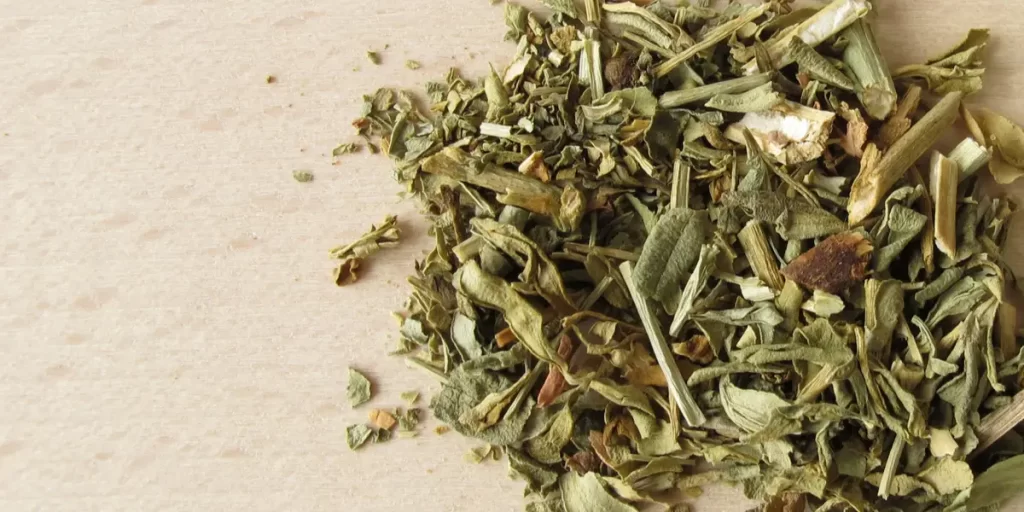Spice Withdrawal and Detox Treatment
Written by Jonathan Strum
& Medically Reviewed by Dr. Annie Tye, PhD
Medically Reviewed
Up to Date
Last Updated - 6/17/2022
View our editorial policy
K2 and spice are common names for synthetic cannabinoid products. Synthetic cannabinoids are man-made chemicals, and there are hundreds of different versions. They are often referred to as synthetic marijuana because they act on cannabinoid receptors in the brain. However, synthetic cannabinoids have substantially stronger effects on cannabinoid receptors and also affect other areas of the brain.
Although many types of synthetic cannabinoids are illegal, it is impossible for them to be properly regulated because there are new versions being made all the time. As a result, unregulated synthetic cannabinoids of unknown composition are sold in novelty stores, gas stations and paraphernalia shops. While the branding of K2 and spice does not change, the chemical composition can vary between batches, so side effects and adverse events are unpredictable. In addition, synthetic cannabinoids are often laced with dangerous, even lethal chemicals. These chemicals include superwarfarins (used in rat poison) and fentanyl, a dangerous synthetic opioid.
Because of the diversity of synthetic cannabinoids and their composition, it has been difficult to study the short- and long-term consequences of their use. Regardless, a trend of addiction and withdrawal symptoms have been observed among regular users. This article will provide an overview of symptoms of spice/K2 withdrawal, detox timelines and treatment options.
K2 /Spice Withdrawal Symptoms
A growing body of literature indicates that synthetic cannabinoids can be rapidly and significantly addictive. Some people who sought treatment reported that synthetic cannabinoids “took over their lives both interpersonally and intrapersonally. It hijacked their personalities and made them addicted.”
Common side effects of synthetic cannabinoid withdrawal include:
- Anxiety
- Irritability
- Agitation
- Mood swings
- Intense cravings
- Compulsive drug-seeking behavior.
These symptoms are characteristic of withdrawal in other substance use disorders, which supports evidence that synthetic cannabinoids can be addictive.
Physical Withdrawal Symptoms
People who abruptly end regular use of K2 or spice may have physical withdrawal symptoms, including:
- Rapid heart rate or palpitations
- Chest pain
- Shortness of breath
- Dizziness
- Headache
- Nausea or vomiting
- Loss of appetite
- Insomnia
- Excessive sweating
- Recurrent seizures, in extreme cases
The intensity and duration of withdrawal symptoms seem to be linked to the frequency and amount of synthetic cannabinoid use.
Psychological Withdrawal Symptoms
Psychological withdrawal symptoms often include:
- Severe anxiety
- Profound cravings
- Obsessive drug-seeking behavior
- Depression
- Lack of pleasure
- Irritability
- Nightmares
- “Inner unrest”
- Hallucinations, in extreme cases
Symptoms of Post Acute Withdrawal Syndrome (PAWS)
A common belief is that withdrawal symptoms end as soon as the drug is out of the user’s system. Unfortunately, this is often inaccurate. Post-acute withdrawal syndrome (PAWS) is a frustrating component of recovery for many people.
Like many other drugs of misuse, synthetic cannabinoids can cause physical and chemical changes in the brain that often persist after the drug has left the body. This can continue for weeks, months or even years in some cases. These changes can cause withdrawal symptoms that are similar or identical to the withdrawal symptoms that occur during the detox period.
PAWS symptoms often fluctuate in intensity but subside as time goes on. It is important to understand that PAWS is a normal part of recovery, and it often includes drug cravings. Experiencing PAWS after ending drug use does not mean your recovery has failed.
Protracted Withdrawal Symptoms
The Substance Abuse and Mental Health Services Administration (SAMHSA) defines protracted withdrawal as “the presence of substance-specific signs and symptoms common to acute withdrawal but persisting beyond the generally expected acute withdrawal timeframes.” Numerous reports show that these symptoms usually persist for weeks or months after ending use.
How Long Does Spice Withdrawal Last?
Synthetic cannabinoids became available in America in 2008, so they are a relatively new drug. The health care community is still evaluating short- and long-term effects of spice and K2 use, and they are actively updating their understanding of the typical withdrawal process.
A case study of one chronic spice user reported that his inpatient stay lasted for 21 days. The study indicated that he suffered from restlessness and insomnia up to 18 days after admission. This client declined long-term outpatient treatment, but he was healthy and free from spice use four months later. In this report, the client received medication to help with withdrawal symptoms, continued to take the medication for a month after release from treatment.
The prevalence of long-term withdrawal symptoms remains unclear. However, it is likely that prolonged withdrawal symptoms are common, especially among people who heavily used spice or K2. Based on published data, it seems that the spice withdrawal timeline can be up to several weeks.
Spice/K2 Detox
Detoxing off of K2 or spice can be uncomfortable, due to the acute withdrawal period. A study found that many people in recovery responded well to medication. Benzodiazepines, such as diazepam and lorazepam, are now considered to be a first-line treatment for K2 or spice withdrawal. Some patients do not respond to benzodiazepines, but barbiturates and antipsychotics are often successful in helping with their withdrawal symptoms.
The opioid medication naltrexone has also been reported to successfully manage cravings and other withdrawal symptoms. This suggests that at least some synthetic cannabinoids products affect opioid signaling in the brain. These medications are often taken throughout the detox and withdrawal period. Use of these medications often continues as the client begins outpatient care and long-term recovery.
Medical Detox
In the case of K2 or spice addiction, medically assisted detox is often appropriate. The duration of medical detox may vary, but it usually takes about one week. Supportive care without medical intervention is sufficient in some cases, but most clients require medication. In addition, medical intervention for recurring seizures is sometimes necessary. Medical detox is strongly recommended for people who have used synthetic cannabinoids heavily and for long periods of time. Medications used in K2 and spice medical detox, include:
- Anti-anxiety medications (benzodiazepines)
- Sedatives (benzodiazepines or barbiturates)
- Antipsychotic medications (quetiapine)
- Naloxone
Clients in extremely poor health or with severe acute symptoms may be given intravenous fluids to prevent damage from dehydration or electrolyte imbalance.
Outpatient Detox
Light to moderate users of synthetic cannabinoids may find that outpatient treatment can allow them to successfully end use. Outpatient programs can range from intensive daily programs to weekly or bi-weekly therapy sessions.
For K2 and spice users, medical intervention is often appropriate. After an initial evaluation with medical professionals at a rehab facility, participants in outpatient programs can be prescribed medications that can help with withdrawal symptoms. This allows them to regain normal daily patterns, including their appetite and the ability to fall asleep and stay asleep.
At Home Detox
Detoxing at home can be challenging for many people who use synthetic cannabinoids. The cravings to use K2 or spice can be intense, and ending use suddenly can result in severe physical and psychological side effects. There are no known K2 or spice withdrawal home remedies.
For these reasons, it is recommended that you consult with a medical professional before you attempt to detox at home. They can provide you with information and, if needed, prescribe a medication that will reduce the severity of withdrawal symptoms.
Alternative Treatments
Although data about the efficiency of alternative treatments is scarce, treatment groups like Marijuana Anonymous may be helpful. However, K2 and spice are far more addictive than marijuana, and many people in recovery found that they required an intensive rehab program to quit successfully.
Finding a Spice Detox Center in Washington or Oregon
Detox centers can vary quite a bit in terms of programs offered, availability of medical intervention and aftercare. For heavy K2 or spice users, detox centers should have multidisciplinary teams who can address all aspects of withdrawal and recovery.
Recovering from synthetic cannabinoid use disorder is likely to include prolonged withdrawal symptoms. For this reason, aftercare programs may be a valuable component in long-term recovery. Some of the factors you should consider as you evaluate rehab facilities include location, cost, effectiveness and staff-to-patient ratio. In addition, most quality rehab programs will be accredited by either The Joint Commission or CARF International.
Key Points: Understanding K2/Spice Withdrawal and Detox
There are a few important things to remember about synthetic cannabinoids and detox:
- K2 or spice withdrawal is physically and psychologically challenging, and it may be lethal in extreme cases
- Detox and acute withdrawal are generally most successful when done under the care of quality rehab centers with multidisciplinary teams
- Medical K2 or spice detox is often appropriate and may include medications such as benzodiazepines and sedatives to help with withdrawal symptoms
- Outpatient detox may be sufficient for people who regularly use low doses of K2 or spice
- Detoxing at home can be very difficult, especially for chronic, heavy users
If you or a loved one is struggling with a synthetic cannabinoid use disorder, The Recovery Village Ridgefield can help. Contact us today to learn about our multidisciplinary team and the programs we offer that can help you on the road to recovery.
Sources
National Institute on Drug Abuse. “Synthetic Cannabinoids (K2/Spice).” February 2018. Accessed August 7, 2019.
Kassai, Szilvia; Pintér, Judit Nóra; Rácz, József; Böröndi, Brigitta; Tóth-Karikó, Tamás; Kerekes, Kitti; Gyarmathy, V. Anna. “Assessing the experience of using synthetic cannabinoids by means of interpretative phenomenological analysis.” Harm Reduction Journal, February 2017. Accessed August 8, 2019.
Cooper, Ziva D. “Adverse Effects of Synthetic Cannabinoids: Management of Acute Toxicity and Withdrawal.” Current Psychiatry Reports, June 2016. Accessed August 8, 2019.
Tai, Sherrica; Fantegrossi, William E. “Synthetic Cannabinoids: Pharmacology, Behavioral Effects, and Abuse Potential.” Current Addiction Reports, June 2014. Accessed August 8, 2019.
Substance Abuse and Mental Health Services Administration. “Protracted Withdrawal.” Center for Substance Abuse Treatment Advisory, July 2010. Accessed August 8, 2019.
Centers For Disease Control. “Health Studies – Understanding Chemical and Radiation Exposures.” April 2018. Accessed August 8, 2019.
Zimmermann, Ulrich S.; Winkelmann, Patricia R.; Pilhatsch, Max; Nees, Josef A.; Spanagel, Rainer; Schulz, Katja. “Withdrawal Phenomena and Dependence Syndrome After the Consumption of ‘Spice Gold.’” Deutsches Ärzteblatt International, July 2009. Accessed August 8, 2019.
Rodgman, Christopher J.C.; Verrico, Christopher D.; Worthy, Ray B.; Lewis, Erica E. “Inpatient Detoxification From a Synthetic Cannabinoid and Control of Postdetoxification Cravings With Naltrexone.” The Primary Care Companion for CNS Disorders, August 2014. Accessed August 8, 2019.
View Sources
National Institute on Drug Abuse. “Synthetic Cannabinoids (K2/Spice).” February 2018. Accessed August 7, 2019.
Kassai, Szilvia; Pintér, Judit Nóra; Rácz, József; Böröndi, Brigitta; Tóth-Karikó, Tamás; Kerekes, Kitti; Gyarmathy, V. Anna. “Assessing the experience of using synthetic cannabinoids by means of interpretative phenomenological analysis.” Harm Reduction Journal, February 2017. Accessed August 8, 2019.
Cooper, Ziva D. “Adverse Effects of Synthetic Cannabinoids: Management of Acute Toxicity and Withdrawal.” Current Psychiatry Reports, June 2016. Accessed August 8, 2019.
Tai, Sherrica; Fantegrossi, William E. “Synthetic Cannabinoids: Pharmacology, Behavioral Effects, and Abuse Potential.” Current Addiction Reports, June 2014. Accessed August 8, 2019.
Substance Abuse and Mental Health Services Administration. “Protracted Withdrawal.” Center for Substance Abuse Treatment Advisory, July 2010. Accessed August 8, 2019.
Centers For Disease Control. “Health Studies – Understanding Chemical and Radiation Exposures.” April 2018. Accessed August 8, 2019.
Zimmermann, Ulrich S.; Winkelmann, Patricia R.; Pilhatsch, Max; Nees, Josef A.; Spanagel, Rainer; Schulz, Katja. “Withdrawal Phenomena and Dependence Syndrome After the Consumption of ‘Spice Gold.’” Deutsches Ärzteblatt International, July 2009. Accessed August 8, 2019.
Rodgman, Christopher J.C.; Verrico, Christopher D.; Worthy, Ray B.; Lewis, Erica E. “Inpatient Detoxification From a Synthetic Cannabinoid and Control of Postdetoxification Cravings With Naltrexone.” The Primary Care Companion for CNS Disorders, August 2014. Accessed August 8, 2019.
Authorship







